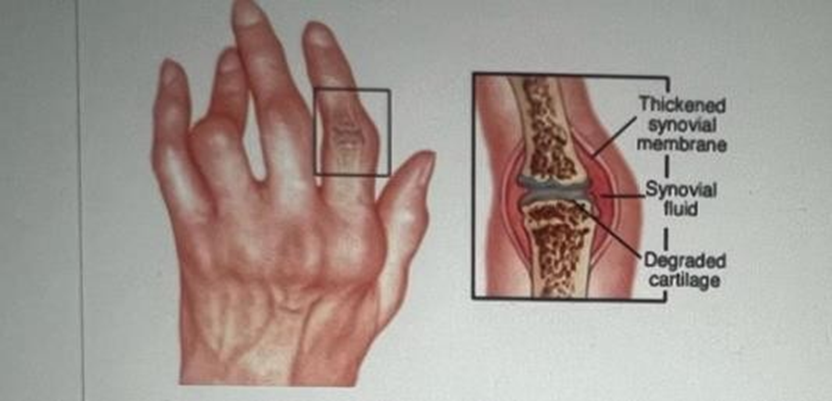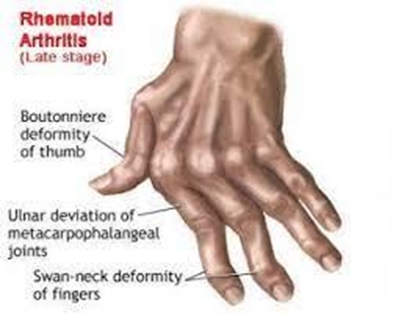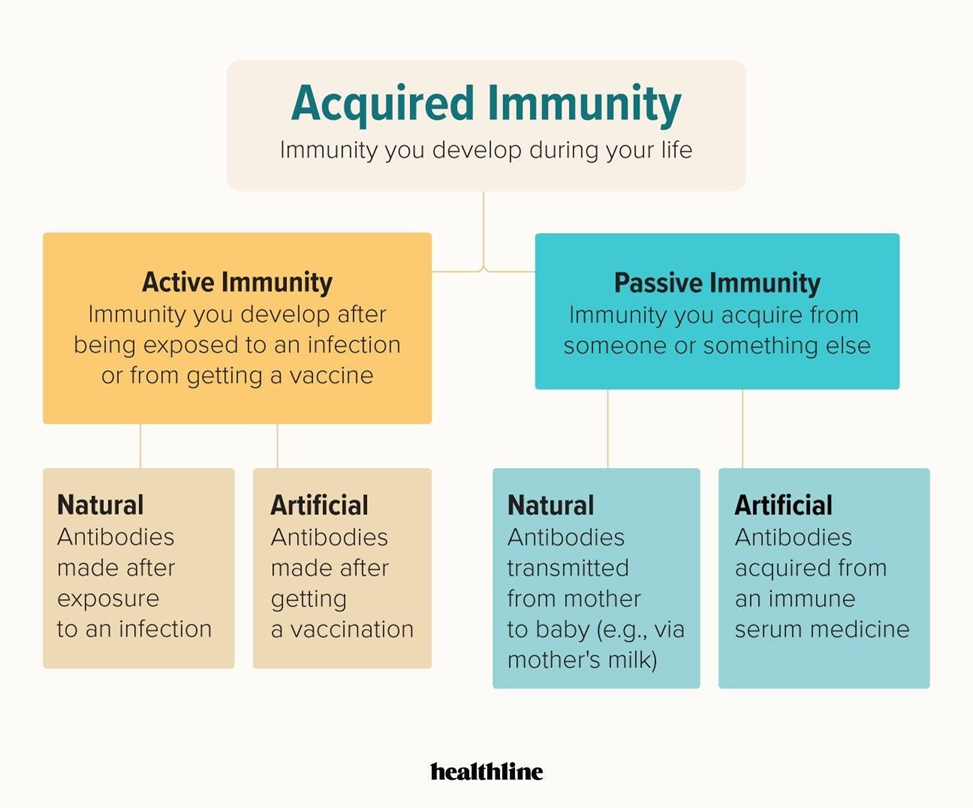The nurse is assessing the hands of a client and notes bony enlargements of the client's joints, as pictured here. The joints are hard, painless, and some of the fingers are deviated from the midline. The nurse suspects these findings are a result of which of the following?

Normal joint wear and tear
Osteomyelitis
Uric acid deposits
Rheumatoid Arthritis
The Correct Answer is D
A. Normal joint wear and tear typically do not result in bony enlargements, deviation of fingers, or hard, painless joints.
B. Osteomyelitis is a bone infection and would present with symptoms such as fever, localized pain, swelling, and redness over the affected bone, rather than bony enlargements of the joints.
C. Uric acid deposits are associated with conditions like gout and would typically manifest as acute attacks of severe pain, redness, and swelling in the affected joint, rather than the chronic, painless joint deformities seen in the scenario described.
D. Rheumatoid Arthritis (RA) is a chronic autoimmune disorder characterized by inflammation of the synovium, leading to joint deformities, bony enlargements, and deviation of fingers. Joints affected by RA are typically hard, painless, and may exhibit ulnar deviation.

Nursing Test Bank
Naxlex Comprehensive Predictor Exams
Related Questions
Correct Answer is C
Explanation
A. Naturally acquired active immunity refers to immunity acquired through natural exposure to a pathogen or antigen, leading to the production of antibodies by the individual's immune system.
B. Artificially acquired passive immunity refers to the transfer of antibodies produced by another individual or animal, such as through administration of immune globulin.
C. Naturally acquired passive immunity occurs when antibodies are transferred from mother to baby through the placenta or breast milk, providing temporary protection to the baby.
D. Artificially acquired active immunity refers to immunity acquired through vaccination, where the individual's immune system is stimulated to produce antibodies in response to an antigen.

Correct Answer is {"A":{"answers":"A"},"B":{"answers":"B"},"C":{"answers":"A"},"D":{"answers":"C"},"E":{"answers":"A"},"F":{"answers":"C"}}
Explanation
A. Placing the client on Contact Precautions is appropriate to prevent the transmission of MRSA to other patients and healthcare workers.
B. Applying a cold compress may worsen tissue damage and compromise blood flow, which can exacerbate the wound infection and cellulitis.
C. Elevating the client's arm can help reduce swelling and improve circulation, aiding in the resolution of cellulitis.
D. Taking a wound culture every shift is not necessary or useful, as it can be painful for the client and does not provide timely information on the infection status. A wound culture is usually done once before starting antibiotic therapy and then repeated only if there is no improvement or signs of worsening.
E. Initiating IV access for fluid and antibiotic therapy is necessary for treating the systemic infection caused by MRSA and cellulitis.
F. Subcutaneous sodium heparin is an anticoagulant that prevents blood clots, but it is not indicated for this client unless they have a history or risk of thromboembolic events, such as deep vein thrombosis or pulmonary embolism.
Whether you are a student looking to ace your exams or a practicing nurse seeking to enhance your expertise , our nursing education contents will empower you with the confidence and competence to make a difference in the lives of patients and become a respected leader in the healthcare field.
Visit Naxlex, invest in your future and unlock endless possibilities with our unparalleled nursing education contents today
Report Wrong Answer on the Current Question
Do you disagree with the answer? If yes, what is your expected answer? Explain.
Kindly be descriptive with the issue you are facing.
